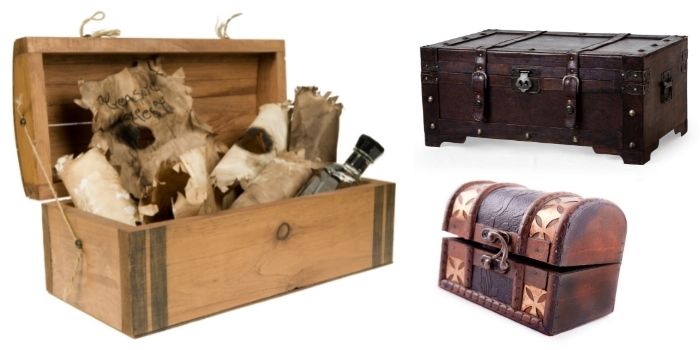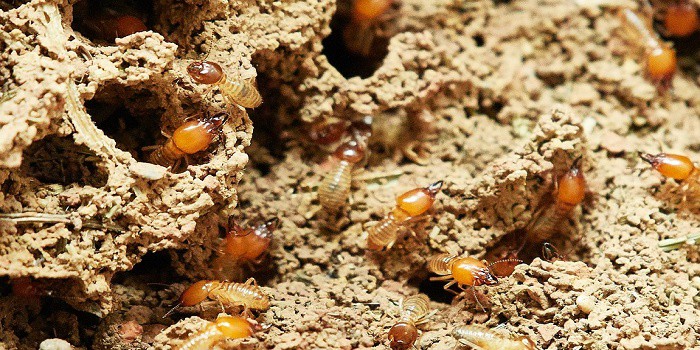
Cedar is one of the more desirable woods used to create chests, jewelry boxes, and cabinets.
The wood material itself is pretty durable, warp-resistant, and unlikely to rot under normal conditions. But like any wood, a cedar trunk will have to be maintained, especially if you want to keep the smell of cedar alive.
To do so means obtaining the right products to restore the old cedar chest’s shine, luster, and scent.
Restoring Old Cedar Chest
Cedarwood in your old chest or cigar box is known for its camphoraceous odor, much like a good aftershave.
But the wood may have lost its natural scent after seeing better days.
Worry not, you can give it new life by following a few simple steps that will help restore that old cedarwood.
Step 1- Clean cedar chest
Before the restoration process can begin, you will need to clean your antique cedar chest nicely from the inside.
The easiest way to get started is by using your vacuum with the brush attachment.
Of course, you will need to empty the cedar chest first of all items.
When emptied, run the vacuum inside the cedar chest until all the dust and other particles are removed.
Step 2- Sand and vacuum
Now sand the interior of the chest gently with fine-textured sandpaper (220-grit works well). This will hopefully expose fresh cedar fibers and revive the natural aroma.
Use a sanding block if needed which will help you apply even pressure and maintain a smooth surface. Be sure to sand in the direction of the wood grain to avoid scratches.
Vacuum out the sanded particles and close the chest for about a half-hour.
When you open it again, you may discover that the unique scent of the cedar is back. But this will depend on the age of the chest, as it’s possible that all the scent is already gone.

Step 3- Use natural cedar oil inside
If your chest needs some more maintenance and additional scent revival, then using 100% natural cedar oil may do the job. It’s somewhat expensive, so you may only want to purchase a small amount depending on the chest size.
The best way to apply cedar oil to your old cedar chest is by using a rag or clean cotton cloth.
- Apply a small amount of cedar oil to a clean cloth.
- Gently rub it across the entire interior surface of the chest to distribute the oil evenly.
- While applying the cedar oil, ensure even coverage without excess oil buildup.
If using a cedar spray instead, generously mist the interior and let it air dry before closing the lid. This should restore the cedar scent of the wood very fast.
If that does not work to bring back the faded natural cedar aroma, try some dry odor absorbers, cedar discs, or blocks.
Some people believe that if you put old coffee grounds in a bowl and leave it in the chest for a few days, it will also help restore the natural scent. Although it might smell a bit like coffee instead of a cedar aroma, it may not be bad.
Step 4- Get rid of scratches from outside
Remember that by addressing scratches and imperfections early, you can properly maintain the appearance of the cedar chest. So, if any scuff marks or abrasions are seen, fix them as soon as possible.
- To remove minor scratches and imperfections on the exteriors, make a paste with a combination of powdered pumice mixed with mineral oil.
- Dab the prepared paste onto the spot with an extra-fine grade steel wool pad.
- Then wipe it off and buff it with a dry, clean cloth.
You may also try some dried tea powder if you can match the color.
Step 5- Refinish your cedar chest’s from outer side
Once you have fixed all the visible scratches it’s time to revive the chest’s exterior.
- Gently apply some white vinegar using a lint-free cloth.
- Leave it for a couple of minutes and wipe with another clean cloth.
- Then using furniture polish (thinned varnish or lacquer sanding sealer), buff lightly with a polishing rag.
- Make sure to buff evenly and in the direction of the grain to avoid streaks or uneven gloss.
- Allow the polish to dry completely before using the chest to ensure a smooth and long-lasting finish.
All these steps when completed patiently will enhance the cedar wood’s natural shine and provide a protective layer against future wear.

How Do I Get Mothball Smell Out of My Cedar Chest?
Wooden chests smell great and are perfect for storing clothes, but they, unfortunately, are a welcome target for infestations.
Especially when they are left closed for long periods without proper ventilation pests like moths, beetles, and even mold can thrive in dark, humid environments, damaging both the chest and its contents.
Mothballs are great for garment protection from pests inside the cedar chest. However, these balls can be dangerous as exposure to them can cause dizziness, organ damage, nausea, or fainting for some people.
If you’d rather have your clothes smell like refreshing cedar forest instead of a strong, unpleasant mothball, here’s how to kick that stubborn stink to the curb:
1. Summon an Air Purifier – A high-quality HEPA filter can work magic by sucking up airborne chemicals and leftover mothball misery. Bonus points if it has an activated carbon filter—those things devour odors like a hungry monster.
2. Deploy a Moisture Buster – A dehumidifier can help prevent musty smells from setting up camp inside your cedar chest. No dehumidifier? No problem. Silica gel packs work too—just scatter them inside like tiny, odor-absorbing warriors.
3. Go All-Natural on Odors – If the mothball odor is clinging on for dear life, try an odor fogger or a neutralizing spray (just make sure it’s safe for wood and fabrics). One good misting, and you’ll be one step closer to a fresh-smelling cedar sanctuary.
Want to go one step ahead, here are a few more tips you can follow…
- Baking soda: Stick an open box or bowl inside the chest and let it work its odor-sucking magic.
- Activated charcoal: These little black pellets don’t just grill your BBQ—they also neutralize bad smells like pros.
- Coffee grounds: Not just for your morning boost! Fresh coffee grounds absorb odors while adding a rich, earthy scent.
- Lavender, cedarwood, or sandalwood: Drop in a few scented sachets—it will do the trick. Alternatively, you can burn a scented candle or diffuse essential oils like eucalyptus or citrus to replace that chemical funk with something far more inviting.
Follow these steps, and soon your cedar chest will smell like a woodland retreat—no mothballs, no mustiness, just pure, fresh goodness.
Tips for Caring & Maintaining the Signature Scent of Your Cedar Chest
So, you’ve banished the mothball stench and revived your vintage cedar chest—now what? To keep that fresh, woodsy aroma alive and well, a little routine care goes a long way.
Here’s how to keep your cedar chest smelling (and looking) its best:
- A gentle vacuum (with a brush attachment) along with a quick wipe-down with a soft microfiber cloth every 2-3 months keeps dust and any sneaky debris from dulling that rich cedar scent.
- While cleaning pay extra attention to corners and crevices—dust, mold, and mildew love to hide there. Cotton swabs are your best friends for these tricky spots.
After cleaning, sun-drying is a simple yet effective trick for an added freshness boost. So, lace the chest outdoors on a sunny day with the lid open to allow natural air circulation. This will also eliminate excess moisture, bacteria, and any lingering odors.
However, keep in mind that you avoid exposing your cedar chest to direct midday sunlight for too long, as excessive heat can dry out or warp the wood.
Instead, choose a shaded or partially sunny spot for gentle drying. If the weather is rainy or humid, opt for an indoor, well-ventilated space to prevent moisture buildup.
Final Thoughts
In addition to its remarkable color, the scent given off by the cedar drives away moths and other unwelcoming pests. This is why it’s an excellent choice for making chests and cabinets for generations.
However, to enjoy all the benefits of the wood’s signature scent, proper care, maintenance, and refinishing of your cedar chest from (inside and outside) is essential.
Follow the guidelines above correctly, and your cedar chest will keep smelling fresh and fabulous for years to come—maybe even longer than you’d expect.

Hi, I am Mark Garner a professional carpenter, woodworker, and DIY painter. I live in the small city of Peoria, Arizona as a semi-retired woodworker. I have started this blog with a simple motive to help you with my wood experience in this sector. If you like to know more about what I love doing and how it all got started, you can check more about me here.




